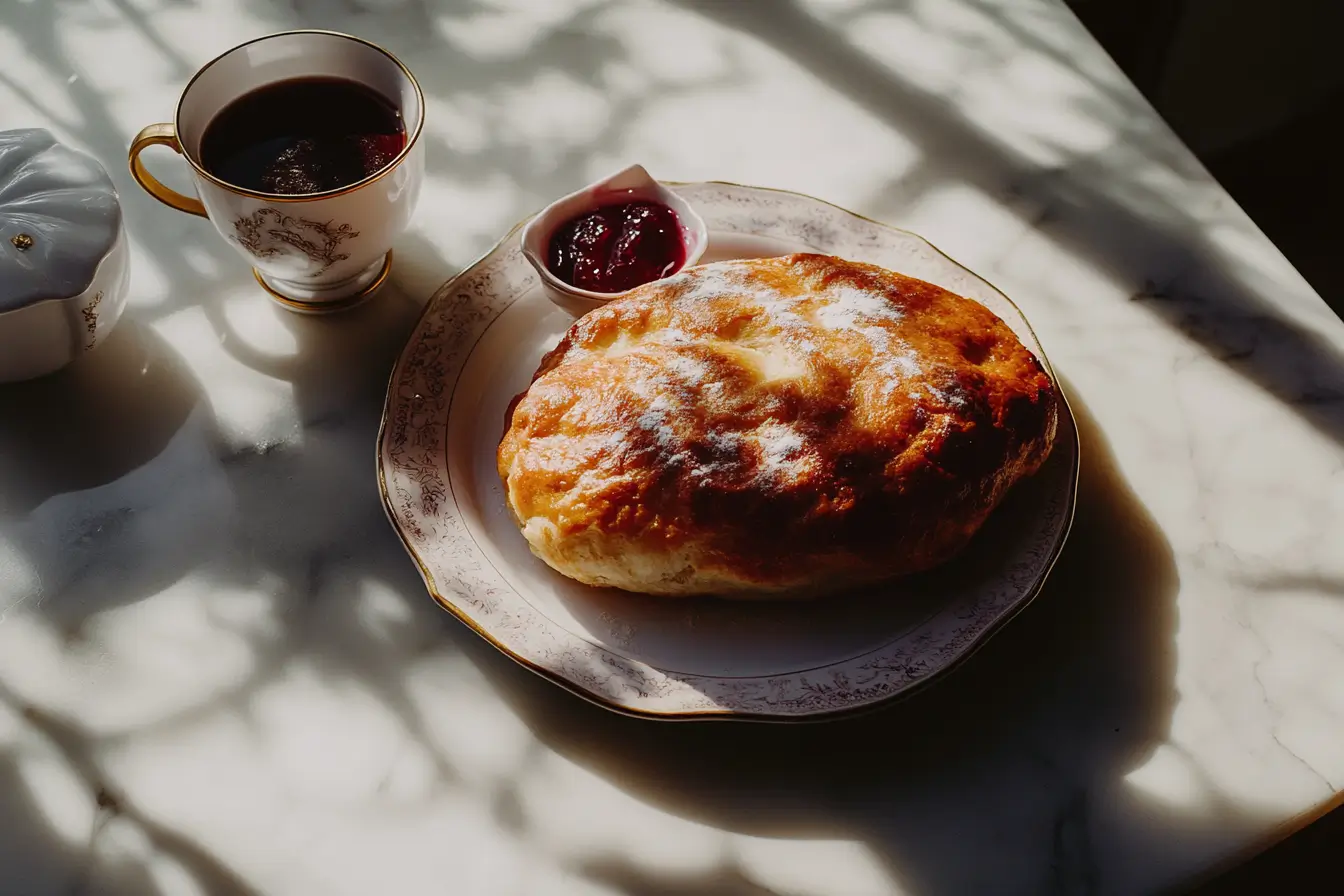If you’ve ever wondered what a Russian bagel is called, you’re not alone! While bagels are commonly associated with Jewish and American cuisines, Russia has its own beloved ring-shaped breads that are steeped in tradition. Let’s dive into the story behind these doughy delights and why they deserve a spot at your breakfast table.
What Is a Russian Bagel Called?
In Russia, the closest relatives to bagels are bubliks (бублики) and sushki (сушки). These are both circular bread rings but with some important differences:
- Bubliks: These are larger, softer, and slightly sweet, with a shiny crust. Think of them as cousins to bagels but with a lighter texture.
- Sushki: Small, dry, and crunchy, sushki are more like crackers. They’re often served as a snack alongside tea.
Bubliks have been enjoyed for centuries and are often seen hanging on strings at bakeries or markets as part of traditional Russian displays.
Bubliks vs. Bagels: What’s the Difference?
Though bubliks and bagels share some similarities—like their round shape and chewy dough—the key differences come down to texture, size, and flavor:
| Feature | Bubliks | Bagels |
|---|---|---|
| Size | Larger (5-7 inches) | Medium (4-5 inches) |
| Texture | Soft but slightly chewy | Dense and chewy |
| Sweetness | Mildly sweet | Savory or slightly sweet |
| Cooking Method | Boiled briefly and then baked | Boiled and baked |
Bubliks are often eaten plain or paired with jam or soft cheese, making them a versatile breakfast item.
The Black Russian Bagel: What’s the Story?
Now, let’s talk about a bagel you’ve likely seen at American bakeries: the Black Russian Bagel. Despite its name, this bagel isn’t actually Russian—it’s an American take inspired by Eastern European flavors. Its dark color comes from ingredients like molasses, cocoa powder, and rye flour, giving it a rich, slightly bitter taste. Toppings like sesame or caraway seeds often add a flavorful crunch.
The Black Russian Bagel is perfect for anyone who loves bold flavors and pairs beautifully with savory toppings like cream cheese, lox, or pastrami.
Why Bubliks Are a Staple in Russian Breakfasts
There’s something timeless about biting into a fresh bublik. Here’s why they’ve been a breakfast favorite for generations:
- Nostalgia: Many Russians grew up with bubliks hanging from strings in the kitchen.
- Versatility: Bubliks can be eaten plain, toasted, or topped with everything from butter to salmon.
- Tradition: Bubliks are often part of celebratory spreads, especially during tea times and family gatherings.
A Simple Russian Breakfast Idea
Want to recreate a Russian-inspired breakfast? Try this Bublik and Smoked Salmon Sandwich for a delicious and easy morning treat:
Ingredients:
- 1 large bublik
- 2 tablespoons cream cheese
- 4 slices of smoked salmon
- 1 small cucumber, thinly sliced
- Fresh dill sprigs
- Lemon wedges
Instructions:
- Slice the bublik in half and toast it lightly if desired.
- Spread cream cheese generously on each half.
- Layer the smoked salmon and cucumber slices.
- Garnish with fresh dill and a squeeze of lemon.
Pair it with a cup of strong black tea for an authentic Russian breakfast experience.
How Bubliks Are Different From Western Bagels
When you hear “bagel,” you probably picture the dense, chewy rounds commonly found in U.S. bakeries. But Russian bubliks break away from that mold in a few key ways.
1. Bubliks Have a Unique Dough Composition
The dough for bubliks is slightly sweet and enriched with more liquid than traditional bagels, often milk or even egg. This creates a softer, more bread-like texture rather than the dense, chewy consistency you get with New York-style bagels.
2. The Size Sets Them Apart
Bubliks are much larger than bagels, often 5-7 inches in diameter. This makes them a heartier option that can be a meal on their own, especially with the right toppings.
Sushki: The Crunchy Cousin of Bubliks

If bubliks are the Russian answer to bagels, sushki are their crunchy, bite-sized relatives. These small bread rings are beloved for their portability and satisfying snap.
1. How Sushki Are Made
Sushki dough is rolled into small, thin rings and boiled briefly before being baked. Unlike bagels or bubliks, sushki are dried out during the baking process to create a crisp, cracker-like texture.
2. Popular Ways to Enjoy Sushki
Sushki are typically enjoyed alongside a cup of tea, often dipped into the hot liquid to soften them slightly before eating. They’re a popular snack in Russian households, especially during afternoon tea time.
Bubliks and Holidays: A Symbol of Celebration
In Russian culture, bubliks aren’t just a breakfast staple—they’re often part of traditional holiday spreads and special gatherings.
1. Bubliks During Maslenitsa (Pancake Week)

Maslenitsa is a week-long celebration leading up to Lent, and it’s famous for indulgent foods like pancakes, pastries, and—you guessed it—bubliks. During this festival, bubliks are often hung as decorations and enjoyed with a spread of butter, sour cream, or jam.
2. Bubliks in Markets and Fairs
In the past, Russian markets and street fairs would have vendors selling bubliks strung together on ropes or sticks. This gave them their iconic look and made them easy to carry as a snack. Today, you can still see this nostalgic presentation in some bakeries.
Toppings and Pairings for Bubliks
Bubliks might be simpler in flavor than a heavily seasoned everything bagel, but that simplicity makes them a perfect blank canvas for toppings.
1. Sweet Toppings for a Russian Breakfast
If you’re craving something sweet, bubliks pair well with homemade jam, honey, or sweetened farmer’s cheese (tvorog). A dollop of sour cherry or raspberry preserves can make breakfast feel like a special occasion.
2. Savory Toppings for a Hearty Snack
For a more savory option, try spreading cream cheese or butter on your bublik and adding smoked salmon or caviar. A sprinkle of fresh dill and a squeeze of lemon can make this breakfast feel gourmet.
How to Bake Your Own Bubliks at Home
If you’ve never had a bublik, making them at home can be a fun way to experience this Russian breakfast classic firsthand.
1. Basic Bublik Recipe
Ingredients:
- 3 ½ cups all-purpose flour
- 1 ½ cups warm milk
- 1 packet dry yeast
- 2 tablespoons sugar
- ½ teaspoon salt
- 1 egg (for brushing)
Instructions:
- In a bowl, dissolve the yeast and sugar in warm milk. Let it sit for 10 minutes until it’s frothy.
- Add the flour and salt, kneading until you get a soft dough. Let it rise for 1-2 hours.
- Divide the dough into large pieces and shape them into rings.
- Boil each ring for about 30 seconds, then transfer to a baking sheet.
- Brush with egg and bake at 375°F for 20 minutes until golden brown.
2. Flavor Variations
For a sweeter version, add a tablespoon of honey to the dough. You can also sprinkle sesame seeds or poppy seeds on top before baking for extra crunch.
FAQs About Russian Bagel
What Is the Breakfast of Russia?
A typical Russian breakfast often includes kasha (porridge) made from buckwheat or oats, blini (thin pancakes), or baked goods like bubliks and sushki. Eggs, sausages, and tvorog (a type of farmer’s cheese) are also common. Russians often enjoy their breakfast with a cup of strong black tea or coffee.
What Is a Black Russian Bagel?
A Black Russian Bagel is a dark-colored bagel made with ingredients like molasses, rye flour, or cocoa powder. Despite its name, it’s not traditionally Russian—it’s an American creation inspired by Eastern European flavors.
How Many Calories Are in a Russian Black Bagel?
A typical Black Russian Bagel contains 250-300 calories, depending on its size and ingredients. Adding spreads or toppings like cream cheese or smoked salmon can increase the calorie count to around 400-500 calories or more.
What Is a Bobo Breakfast?
A Bobo breakfast refers to a trendy, health-conscious breakfast that includes items like avocado toast, smoothie bowls, and artisanal bagels. It’s popular among millennials and Gen Z in the U.S., often featuring photogenic meals perfect for social media.
Conclusion
Russian bubliks may not be the exact equivalent of American bagels, but they hold their own as a beloved part of Russian culinary history. Whether you’re munching on a bublik with butter or enjoying a Black Russian Bagel with cream cheese, bread rings have a way of making breakfast feel extra special.
Next time you’re craving a cozy breakfast, try a bublik with tea—you’ll get a delicious taste of Russian comfort food without even leaving your kitchen!


1 thought on “Russian Bagels: What Are They Really Called?”